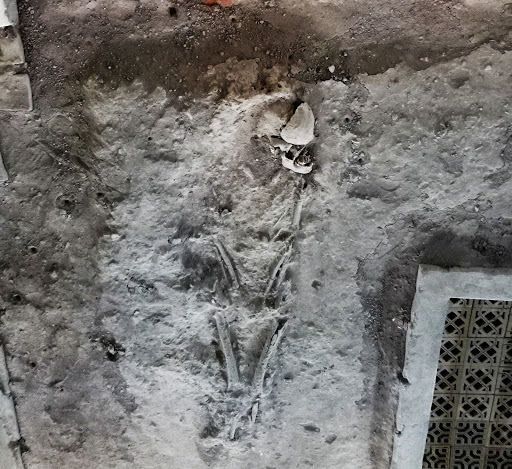Pyu City State of Halin
Today, the ruins of the once great city coexist with a group of modest villages known for their hot saline springs. In comparison to the Pyu city states of Beikthano and Sri Ksetra, visible ruins of either religious monuments or other structures are considerably less in Halin. The structural remains of many square or rectangular buildings found in Halin share similarities with those at Beikthano.
Archaeological excavations have unearthed palace fortresses, burial sites, gateways, structures of religious buildings and monasteries as well as brick monuments of Buddhist stupas.
The southern gateway of Halin designated as “HL_17” was excavated around 1966-1967 CE. The excavations has unearthed two curved brick arms and small apartments for garrisons attached to the inner sides of both those arms. Under the entrance of the gateway, excavations have uncovered a graveyard dating back to the bronze age. Scientific dating has estimated that the gateway was constructed sometime around 250 CE (i.e. 1700 BP).
 |
| Halin archaeological site: Southern Gateway (HL_17) |
 |
| Halin archaeological site: Southern Gateway (HL_17) |
 |
| Halin archaeological site: Southern Gateway (HL_17) |
The site designated as “HL_26” represents a burial site located below the ground level.
 |
| Halin archaeological site: Excavated burial site (HL_26) |
 |
| Halin archaeological site: Excavated burial site (HL_26) |

Halin archaeological site: Excavated burial site (HL_26)
|
 |
| A Pyu stone inscription dating back to the 4th Century CE displayed at the Halin archaeological museum |
 |
| A stone inscription displayed at the stone inscription shed of Halin |
 |
| Some of the stone inscriptions displayed at the stone inscription shed of Halin |
 |
| A stone carving displayed at the stone inscription shed of Halin |
Other than the stone inscriptions, the archaeological museum also displays artifacts such as jewelry, burial urns and terracotta decorated bricks unearthed during excavations.

Some of the excavated jewelry displayed at the Halin archaeological museum
Buddha statues were not among the archaeological findings of Halin. This raises the question as to whether image-worship was not prevalent in Halin even though it coexisted with Sri Ksetra, another Pyu city state of which the archaeological findings include a number of Buddha images.
The stupas of the Panbewonmin Pagoda Complex in Halin appear to be from a later period. They do not resemble the bulbous elongated stupas we find at “Baw Baw Gyi Pagoda” or “Paya Gyi Pagoda” which belong to the Pyu city state of Sri Ksetra.

Ruins of the Panbewonmin Pagoda complex 
Ruins of the Panbewonmin Pagoda complex 
Ruins of the Panbewonmin Pagoda complex 
Ruins of the Panbewonmin Pagoda complex
 |
| Ruins of the Panbewonmin Pagoda Complex |
 |
| Ruins of the Panbewonmin Pagoda complex |
What exactly lead to the demise of Halin is unknown. It is believed that around 832 CE, Burmans of the Nanzhao Kingdom destroyed the Pyu city states. Burmans are considered to have founded the city of Bagan in the 9th Century CE.
Pyu settlements remained in Upper Burma for several more centuries. The ruins of what may have been either a religious building or a monastery (designated as “HL_19”) have been unearthed across the road from the Southern Gateway (“HL_17”). However, the architecture of the structure resembles the style used in monastery buildings constructed in Bagan around 12th Century CE. It is believed that the Pyu people and their cities were absorbed and assimilated into the Bagan empire by then.

Halin archaeological site: Religious building or monastery (HL_19)
By the 13th Century CE, the Pyu people had assumed the Burman ethnicity, thus disappearing from the subsequent historical records.
During the 38th session of the World Heritage Committee held in 2014, the Pyu city states of Halin, Beikthano and Sri Ksetra were inscribed as UNESCO World Heritage Sites.












Comments
Post a Comment